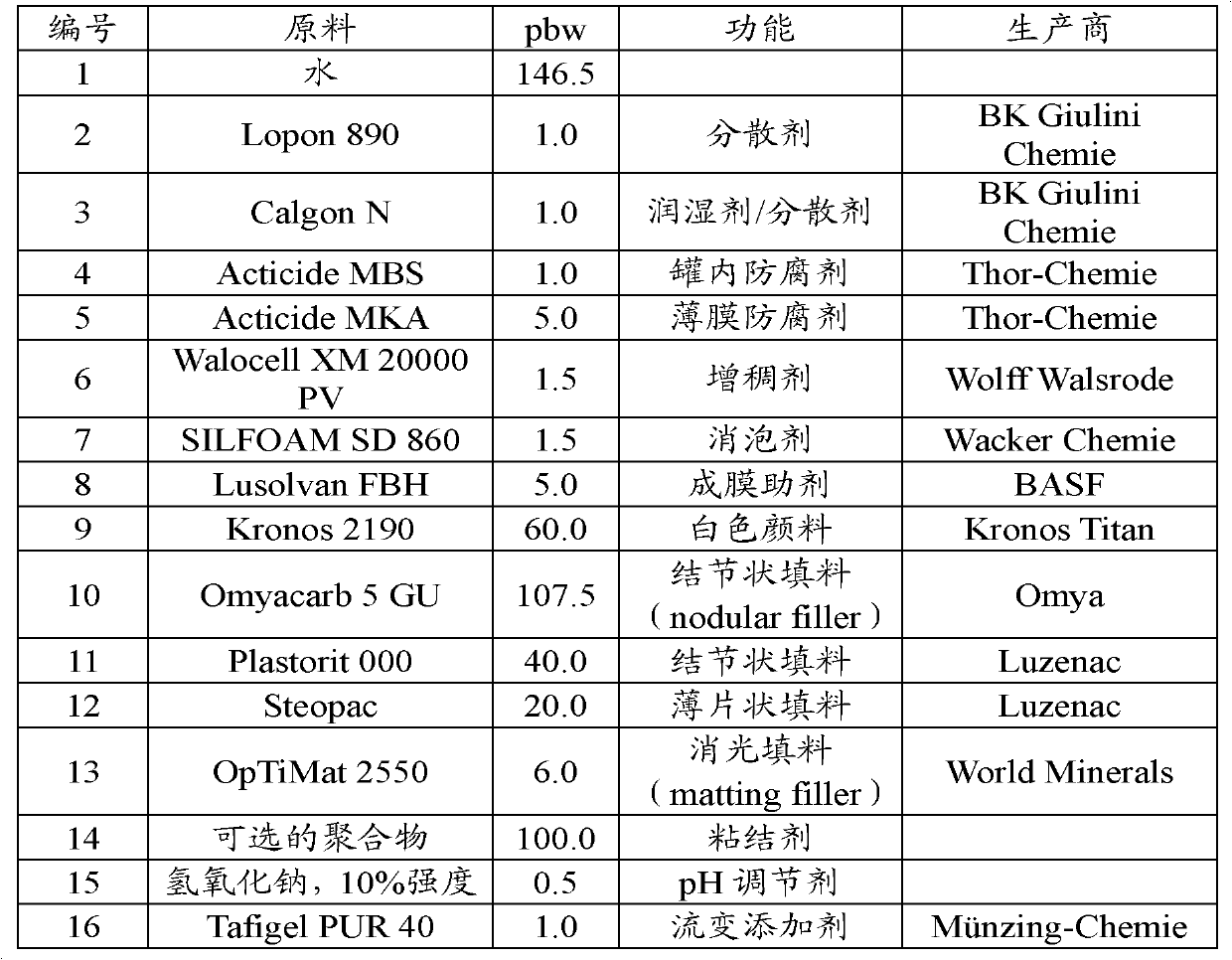Nanoparticulate silicone organo copolymers and use thereof in coating means
A nanoparticle, silicone technology, applied in coating, transportation and packaging, thin material handling, etc., can solve problems such as coating is not
- Summary
- Abstract
- Description
- Claims
- Application Information
AI Technical Summary
Problems solved by technology
Method used
Image
Examples
Embodiment 1
[0080] Example 1: Polymer 1:
[0081] A 100-liter reaction vessel equipped with jacket cooling, evaporative cooling and anchor stirrer was charged with 6560 g of water and 1 g of Fe(II)-EDTA complex. The device was made inert by evacuating twice and breaking the vacuum with nitrogen.
[0082] In the second vessel, dissolve methacrylic acid, water, and sodium lauryl sulfate in the amounts indicated in feed 1 below (aqueous phase).
[0083] In the third container, the remaining components of feed 1 were uniformly dissolved in the indicated amount (oil phase).
[0084] Then, with sufficient stirring, the oil phase is introduced into the vessel containing the water phase. The resulting coarse emulsion was homogenized in one pass using a high-pressure homogenizer from IKA at a pressure of 800 bar. This obtains a preliminary emulsion containing all the components of feed 1. The preliminary emulsion was stirred at room temperature in a stirring vessel (primary emulsion container). In a s...
Embodiment 2
[0105] Example 2: Polymer 2:
[0106] Polymer 2 was prepared in the same manner as in Example 1, except that the composition of feed 1 was as follows:
[0107] Feed 1 (all values are in grams):
[0108] Hexadecane 131.2
[0109] Butyl acrylate 7216
[0110] MMA 7872
[0111] Butyl methacrylate 2296
[0112] Methacrylic acid 360.8
[0113] Sodium lauryl sulfate 492
[0114] Linear monomethacrylate methyl-functional
[0115] PDMS (number average molar mass: 1200g / mol) 918.4
[0116] Particles 1 918.4
[0117] Steamed water 9840
[0118] Polymer 3:
[0119] Polymer 3 was prepared in the same manner as in Example 1, except that the composition of feed 1 was as follows:
[0120] Feed 1 (all values are in grams):
[0121] Hexadecane 131.2
[0122] Butyl acrylate 7216
[0123] MMA 6560
[0124] Butyl methacrylate 2296
[0125] Styrene 1312
[0126] Methacrylic acid 360.8
[0127] Sodium lauryl sulfate 492
[0128] Particle 1 1837
[0129] Steamed water 9840
[0130] Polymer 4:
[0131] Polymer 4 was prepared i...
PUM
| Property | Measurement | Unit |
|---|---|---|
| diameter | aaaaa | aaaaa |
| particle size | aaaaa | aaaaa |
Abstract
Description
Claims
Application Information
 Login to View More
Login to View More - R&D
- Intellectual Property
- Life Sciences
- Materials
- Tech Scout
- Unparalleled Data Quality
- Higher Quality Content
- 60% Fewer Hallucinations
Browse by: Latest US Patents, China's latest patents, Technical Efficacy Thesaurus, Application Domain, Technology Topic, Popular Technical Reports.
© 2025 PatSnap. All rights reserved.Legal|Privacy policy|Modern Slavery Act Transparency Statement|Sitemap|About US| Contact US: help@patsnap.com


